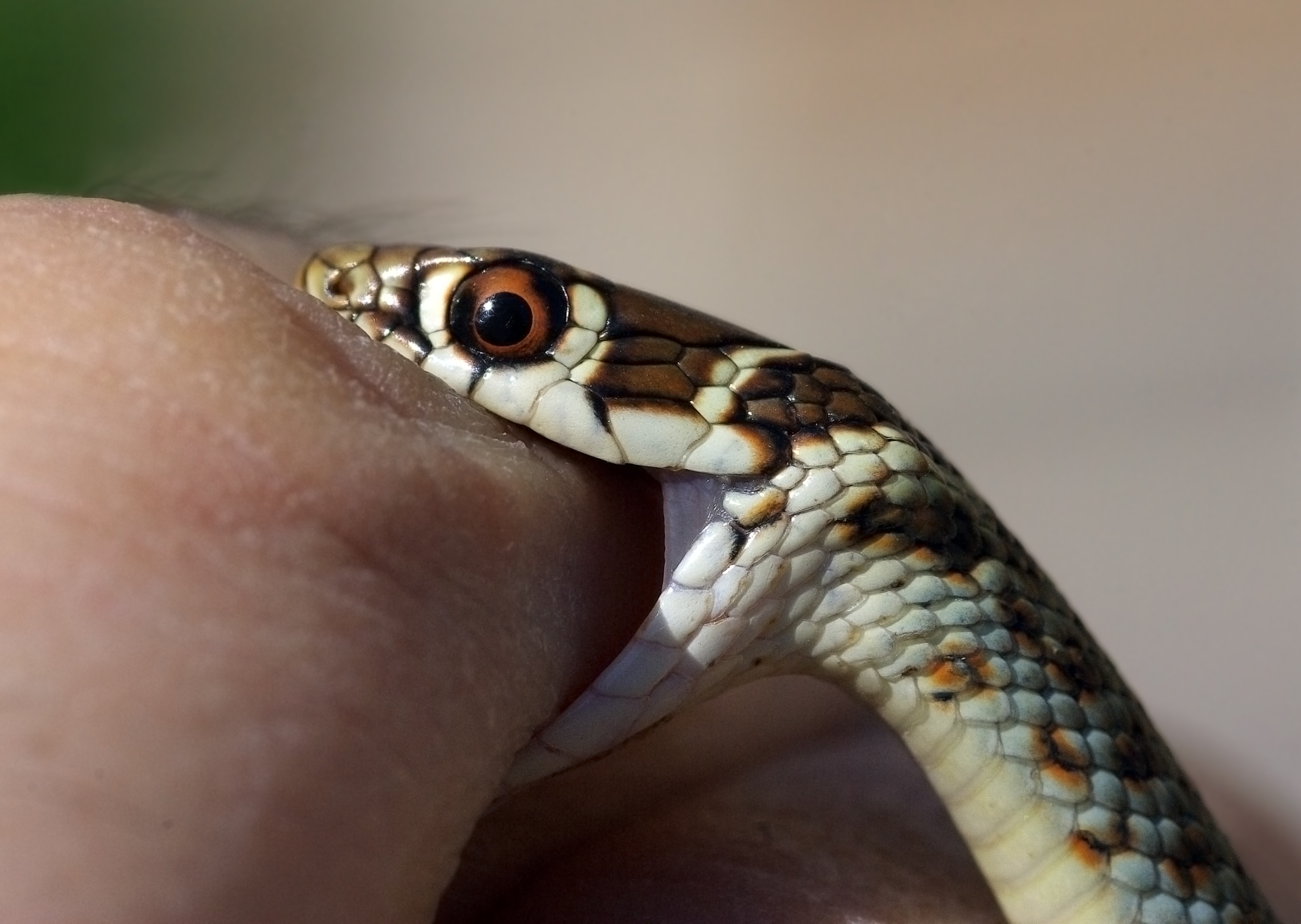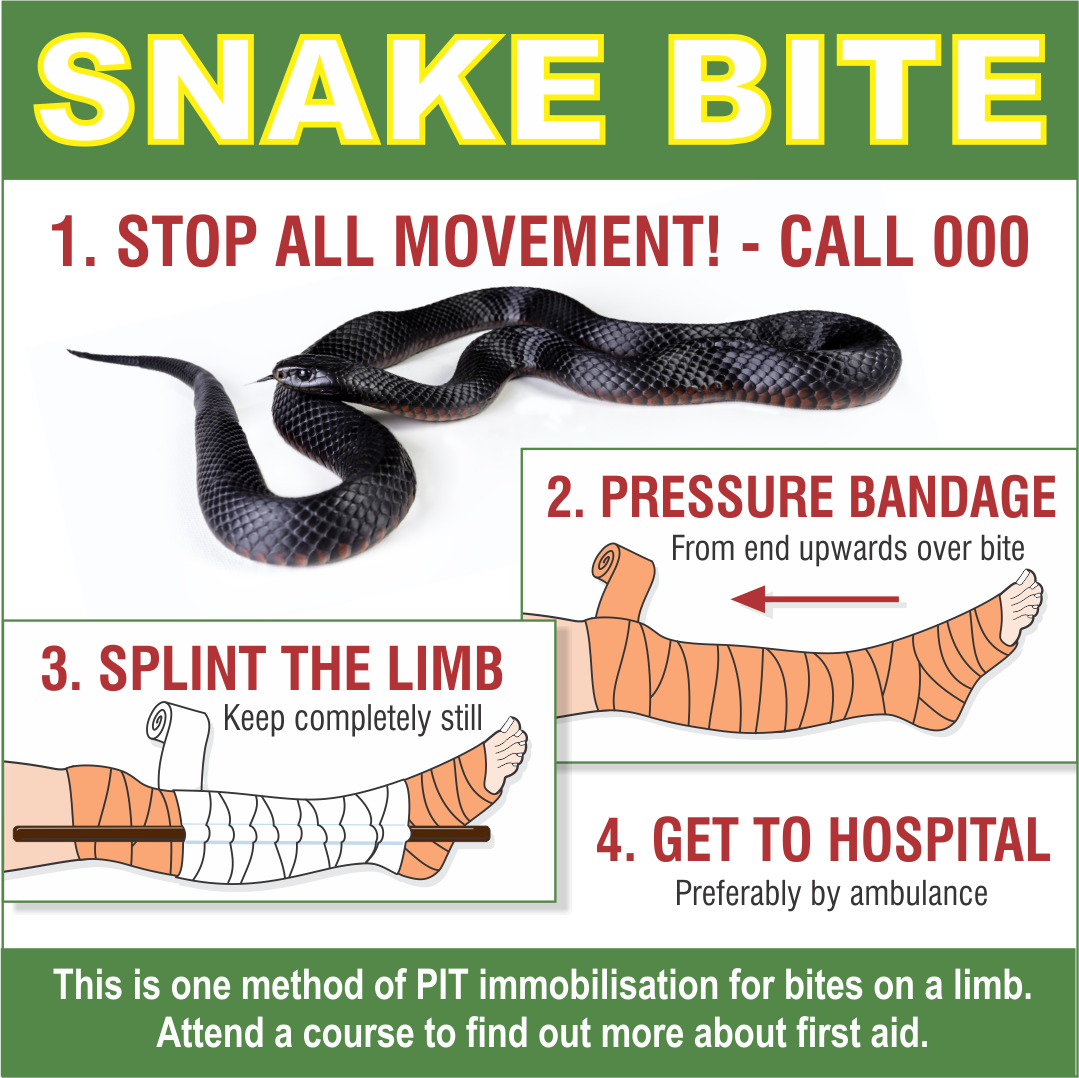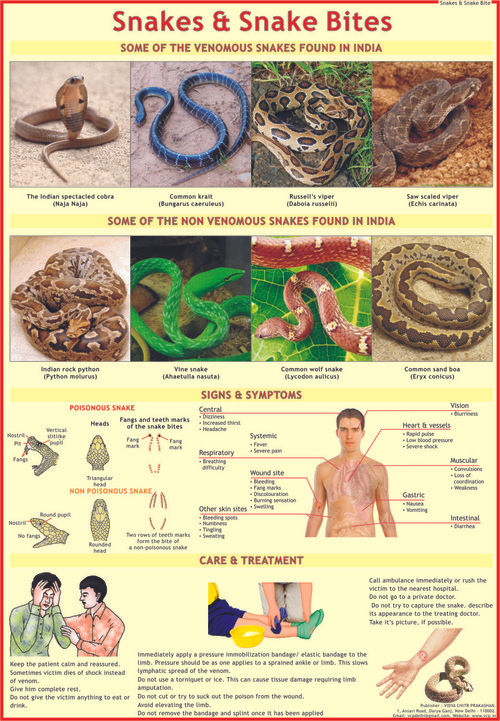Favorite Tips About How To Deal With A Snake Bite

Typical symptoms of a nonvenomous snakebite are pain, injury and scratches at the site of the bite.
How to deal with a snake bite. Learn what to do if you are bitten by a snake, especially a venomous one. Learn how to avoid snake bites after a natural disaster and what to do if you or someone else is bitten by a snake. Identifying the snake can help with treatment of the snakebite.
Just treat it in the field like any puncture wound: Pain at the bite site. Take a broad bandage and bind along the limb starting at the bite area, at the same pressure as for a sprain.
Learn how to identify and treat snake bites, whether dry or venomous. 1 determine the type of bite. Bites and stings dermatology emergency medicine first aid how we reviewed this article:
If possible, use a marker or pen and circle where you were bitten in case of swelling. The only way that the venom can. If you are bitten by a snake in the wilderness, it’s imperative that you have some idea whether the snake that bit you is venomous or.
Find out the symptoms, treatment, and antivenin for. Find out the signs and symptoms of snake bites,. Take notes or voice record on a smartphone what happened, she said.
Clean the bite area and apply a loose bandage. Most snakebites happen on the arms, wrists or hands. 1) carefully walk backwards and find a safe space to sit down nearby before the venom drops your blood pressure and you pass out and hit your head.
Of course, the best way to deal with a snake bite is to avoid getting bitten in the first place. Sources share this article medically reviewed by alana biggers,. To identify a snake bite, consider the following general symptoms:
Find out how to identify the snake, prevent complications, and get medical help. Find out what to do if you see a venomous or nonvenomous snake, how to protect the. Learn how to deal with a snake bite from webmd, a trusted source of medical information.
The evidence suggests that pressure immobilization bandages and related strategies are the best interventions to delay onset of systemic toxicity from. Find out which snakes are venomous, what symptoms to look for and when to seek medical help. Swelling and redness around the wounds.
When bitten, the venom has been injected into this lymph fluid (which makes up the bulk of the water in your tissues). Bitten by a nonvenomous snake? Here are some tips for preventing snake bites:


















